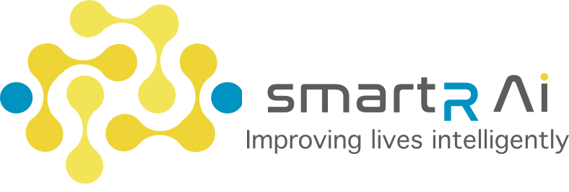Sports, an activity defined by human movement, may not appear to have much to do with AI. But if there is one thing we know about the impact of AI, is that it is pervasive. Certainly, the sports industry will be no exception. With the Paris Olympics just around the corner, we are here to guide you through how AI seeks to improve the sports industry, along with some of the risks we should be aware of going forward.
The AI Market in Sports currently sits at about USD 5.93 billion (2024). Yet, by 2029 this figure is predicted to skyrocket up to 20.94 billion. The potential for growth is outstanding and many predict that AI will change not only the way sports are played, but also how they are consumed, managed and monetized. Below are 5 ways AI is shaping and will continue to shape the sports industry as we know it:
Enhancing Performance
By analyzing an individual’s statistics, injury records, biometric data, disciplinary records and even life footage, AI can help improve both the training and the live performance of athletes and players. The predictive modelling skills inherent to AI can provide guidance on:
- Personalized training programmes;
- Probability of a player getting injured;
- Likelihood of underperformance; and
- The potential of a player experiencing a breakout season.
This ensures athletes and players are performing at their best with minimum risks, and that coaches are making data-driven decisions.
Just as one of our previous blogs explored how medicine was becoming more personalized through AI, so too will AI personalize the training that athletes will receive based on their biological composition. The increasing use of smart-watches and other bio-trackers produce a constant source of real-time data which can be used to make immediate adjustments to training regiments and strategies.
But smart watches aren’t the only cool gadgets you will be seeing in the sports industry. If you are a gadget enthusiast like me, with all the gear and no idea, then you will also be glad to know that there are some pretty cool AI powered gadgets out there like:
- Soccer balls which provides real-time data on its trajectory, spin, and force.
- Tennis rackets which analyses a player’s swing, contact point and ball spin.
- Golf clubs which monitor the user’s swing.
- Running shoes which adapt their cushioning level to the user’s fatigue.
AI is also a _game-_changer for improving game tactics. Amongst others, the US National Basketball Association (‘NBA’) and the US National Football League (‘NFL’) are using AI to analyze game films and enhance player tactics.
Fairer Officiating
“The integration of AI into sports officiating is ushering in an era of precision and fairness.”
Officiating has been described as “highly dependent on emotion”. Live game analysis through the use of machine learning algorithms could better track specific players or objects on the field and ensure decisions are made on precise fact-based data, thus reducing bias.
Yet, it should be noted that some concerns have been raised when it comes to judging the artistic side of sports. Sports like gymnastics or diving are often a combination of mathematically quantifiable measurements (such as body angles or rotations), as well as a more artistic expression. For sports like these, we will likely have to retain a human element to the judgment, at least on the artistic aspect.
Improving Scouting
AI can ensure scouting occurs much more widely than it currently does through its ability to analyze vast quantities of player statistics, videos and other data to identify promising talent. The NBA has already begun to implement AI-powered tools for scouting. Furthermore, the International Olympic Committee (‘IOC’) even partnered with Intel to scout for athletes in overlooked places like Senegal. They brought equipment measured the athletic ability of thousands of children, finding 40 children with significant potential.
Fan-Engagement
Seeing the sweat trickle down the forehead of your favourite athletes or players may not be an experience reserved for the front row seats for much longer. VR headsets and AR technologies are making the future of sports more immersive than ever.
The revolutionary 3DAT software launched in the 2020 Tokyo Olympics used cameras with AI and computer vision to show fans near real-time data during the race. Such as: athlete speed; who is in the lead; and distance traveled/distance remaining. More recently the FIFA+ app used AI to allow fans to point their phone to the pitch and access player-specific information, live statistics and heat maps.
Security at Games
Predictions for future stadiums have described them as “technological fortresses and data templates”. In fact, plans for the Paris Olympic games have created controversy over the use of AI-powered video-surveillance systems that flag-up security concerns like abandoned packages or crowd surges. While the use of real-time facial recognition technology is banned across the EU (barring appropriate judicial or administrative authorisation) and the French government insists it won’t use it, digital watchdog groups remain on high alert.
Furthermore, AI will be used to enforce security not only in person during the Paris Olympics, but also online. An AI-powered monitoring system to protect athletes from online abuse has been put in place. The system analyzes millions of posts from across social media platforms and flags abusive messages for removal.
Concerns Raised
While there are clearly a lot of positive applications for AI in the sports industry which aim to improve performance, enjoyment and safety, there are also some concerns to be aware of.
As is always the case with powerful data analysis technologies like AI, data privacy and security are central concerns. Huge amounts of data are collected and analyzed about athletes and players. Not only must the proper consent mechanisms be carried out, but there must also be a wider awareness of the privacy concerns created by collecting vast quantities of biometric data, in addition to what that could reveal about a person’s personal life and health. Security mechanisms should be stringent and data minimization practices need to be a priority. Sports committees should begin to consider what information is really necessary to improve the entertainment experience of the sport and what should remain private, prioritizing the health and wellbeing of athletes and players.
With all algorithms and predictive analysis there is also the issue of avoiding bias. Particularly when it comes to algorithms that make decisions or suggestions on player evaluation, recruitment, or game strategy, it is essential that the algorithms be trained on diverse data sets. Algorithms should be prepared to accommodate biological data from a diverse population, and if trained on previous sporting events or decisions then to not reflect the prejudices of predecessors.
Finally, the IOC and other sports bodies must evaluate to what extent individuals are advantaged by AI technologies and ensure that inequalities in the sports industry are not exacerbated. Just as the IOC created a framework to govern performance enhancing-steroids, so too might it be necessary to create a technology governance framework. Thus, ensuring developing countries or less advantaged teams are not pushed out of the sports industry.
Sports is all about competition under a set of fair and consistent rules. AI has the potential to take the competition to the next level. We just have to make sure everyone can get there.
Written by Celene Sandiford, smartR AI
Image source: https://deepai.org/machine-learning-model/text2img

